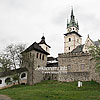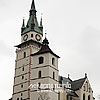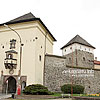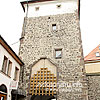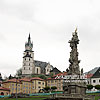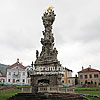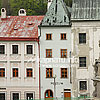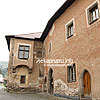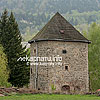Kremnica
Kremnica is a town in central Slovakia located in Žiar nad Hronom district. The town with the population about 6,000 persons lies at the foot of Kremnica mountains.
In the Middle Ages Kremnica was one of the main mining towns in Europe because of its gold veins found nearby. The first evidences of mining operations in Kremnica date back to the IXth century. In the XIIIth century the Hungarian kings invited new settlers from Germany to help rebuilt the destroyed region after the inhabitants of Kremnica and surroundings were affected by the Mongol invasion.
The town was first mentioned in a written document from 1328 when King Charles I granted Kremnica royal town privileges. In the XIVth century there was established a mint. Golden florins and later the famous "Kremnica ducats" which were used as an international means of payment as a result of their high purity of gold were produced there. It was the most important mint and later the only one in the Kingdom of Hungary, later in Czechoslovakia and nowadays in Slovakia. That's why a nickname 'Golden Kremnica' was given to the town.
Intensive processes of gold mining and coin production were ended in the XIVth-XVth centuries. During the period of Protestant Reformation Kremnica belonged to the Protestant 'League of Seven Mining Towns' with such settlements as Banská Belá, Banská Bystrica, Banská Štiavnica, Ľubietová, Nová Baňa and Pukanec. In the XVIth century the town became a major centre of medals and medallions production. At the same time the process of gold mining became more difficult and expensive, so in 1970 it stopped completely. Nowadays Kremnica is an attractive tourist destination in central Slovakia.

 Ukraine
Ukraine Poland
Poland Slovakia
Slovakia
 Українською
Українською